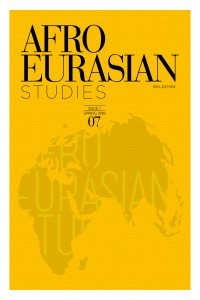
Afro Eurasian Studies
Yazarlar: Huseyin ALPTEKİN
Konular:-
Anahtar Kelimeler:Ethnic conflict,Ethnic incorporation,Ethnic politics,Kurds,Turkey
Özet: This paper examines the policies adopted by the consecutive Justice and Development Party governments toward the Kurdish population in Turkey since 2002. These policies are called ethnic incorporation policies in the paper and take inclusive or exclusive forms. The paper distinguishes between the ethnic incorporation policies adopted and implemented by the political center and their perception in the Kurdish periphery. The paper investigates these policies in four overlapping and intersecting, but conceptually distinct domains: security, socio-culture, economy, and politics. It concludes that while ethnic incorporation policies take increasingly inclusive forms in the socio-cultural and economic domains, the increasing exclusiveness in the security domain infringes the political domain and invalidates the moves toward further inclusion in this domain which have been gained as a result of a slow and painstaking process